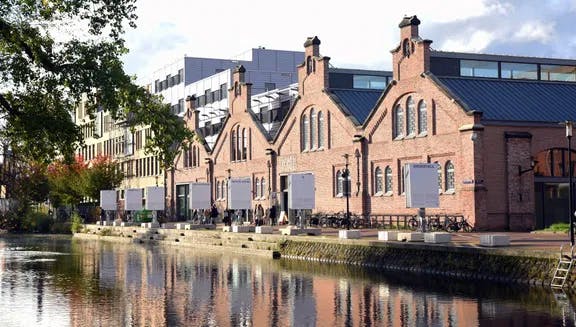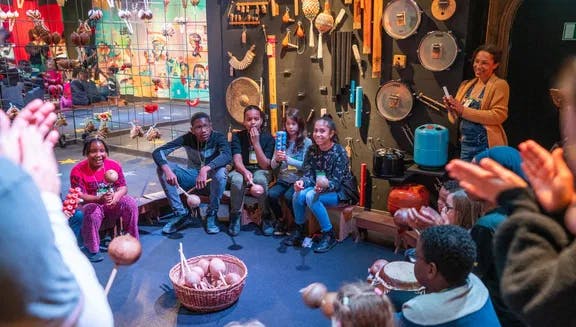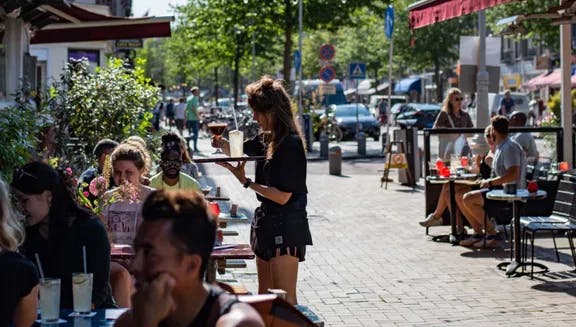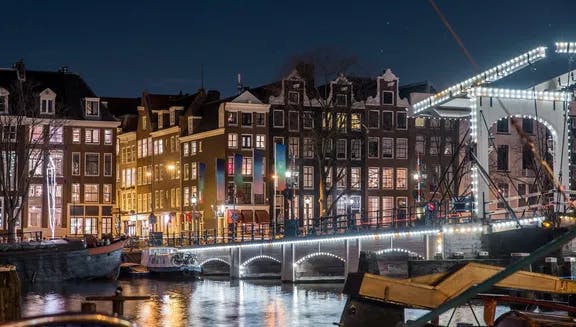
Oost then and now
History

In the 17th-century, Amsterdam-Oost was predominantly an agricultural region formed by the creation of the Watergraafsmeer polder and dotted by country estates built by wealthy Amsterdammers, of which only Huize Frankendael remains. What we now know as Oud-Oost (Old-East) wasn’t developed until the last quarter of the 19th-century when elegant townhouses were built surrounding Oosterpark. This green space was designed in the English-landscape style by architect Leonard Springer in 1891, later to be overlooked by the monumental Wereldmuseum Amsterdam (formerly the Tropenmuseum) (1926) which housed objects brought back from what was then known as the Dutch East Indies (now, present-day Indonesia) during the colonial period.
By contrast, the Dapperbuurt and Indischebuurt were developed as working-class districts. These neighbourhoods were built during a period of rapid urban expansion that also saw the construction of two new train stations, municipal bathhouses, such as Badhuis Javaplein and the monumental Berlage Bridge over the Amstel. Meanwhile, along the River IJ, new islands were created to form the Oostelijke Eilanden (Eastern Docklands) area. Land reclamation for Amsterdam’s newest suburb, IJburg, began in the 1990s and continues today.
Vibe today

The spacious streets of Oost lined with Turkish bakeries, Surinamese supermarkets and Middle Eastern lunchrooms stand alongside nostalgic barber shops, laundromats, wine bars and coffee hotspots. On sunny days, crowds gather on the terraces of the area’s many microbreweries, including at Brouwerij ‘t IJ, the famous taproom housed in a historic windmill. Further east, Flevopark contains its very own distillery, ‘t Nieuwe Diep, serving the beloved Dutch jenever from a cosy tasting room.
The heart of Oost beats at the Dappermarkt, Amsterdam’s oldest market, where shoppers and vendors have haggled over fruits, flowers and fabric for the last century. The market retains a distinctly multicultural character with half of the traders being not originally from the Netherlands. Elsewhere in the neighbourhood, festivals such as Keti Koti - held on July 1 to commemorate the abolition of slavery - are a reminder of the colonial histories that have shaped this culturally diverse area; in the southwest corner of Oosterpark, you’ll find the National Monument to Slavery by Surinamese artist Erwin de Vries.
Today the Oostelijke Eilanden (Eastern Docklands) and IJburg are prized as some of Amsterdam’s best real estate, with buildings showcasing cutting-edge architecture laden with maritime history. Many of the former warehouses have since been repurposed into creative hotspots such as Pakhuis de Zwijger or Mezrab - a fantastic hub for storytelling, comedy and spoken word. As Oost grows in size and popularity, it's also breeding more and more diverse and lively cultural offerings: not only is home to the monumental Wereldmuseum Amsterdam, one of Europe’s leading anthropological museums, but the area thrives on multidisciplinary venues such as Studio/K and Framer Framed.









